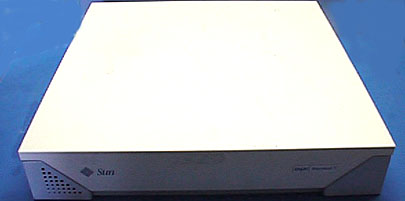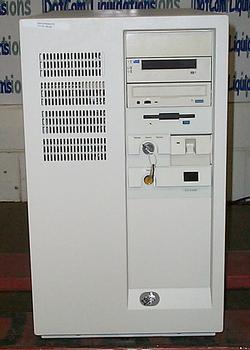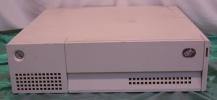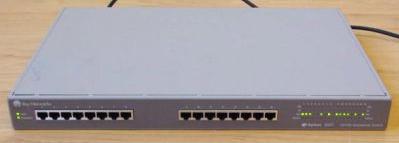|
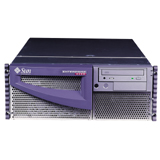 |
Sun Enterprise 420R
3 x 450MHz UltraSparc-II (4MB cache) processors
1024MB RAM
2 x 18.2GB 10Krpm SCSI hard drives (RAID-1)
SCSI DVD-ROM drive
on-board Fast Ethernet NIC (hme)
on-board UltraSCSI
OS: Solaris 9
|
|
Services:
Authentication (NIS), Internal DNS (Bind),
E-Mail (Sendmail, MIMEDefang, SpamAssassin, Cyrus IMAPd),
Web server (Apache), Remote access
|
|
In my on-going efforts to not pay an insane fortune for electricity,
I migrated to this machine from an E4000. On the upside, I can now
more easily use 450MHz processors (versus 336MHs ones), and can even
use SunPCi cards. However, this machine is now being phased out, since
I have turned my SB1000 into a server.
Its services are in the process of being migrated to Hyperion and Neutronium.
|
|
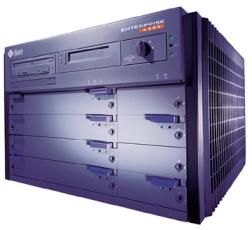 |
Sun Ultra Enterprise 4000
8 x 336MHz UltraSparc-II (4MB cache) processors
2048MB RAM
2 x 18.2GB 10Krpm SCSI hard drives (RAID-1)
SCSI 32X CD-ROM drive
SCSI DDS3 12/24GB tape drive
2 x on-board Fast Ethernet NIC (hme)
2 x on-board Fast/Wide SCSI
on-board dual FC-AL (SOC+)
Antares SBus UltraSCSI card
SBus Fast Ethernet NIC (hme)
SBus Gigabit Ethernet NIC (gem)
2 x JNI SBus FC64-1063 FC HBA
(connected to the FibreVault)
OS: Solaris 9
|
|
Services:
File server (NFS/Samba), Authentication (NIS), Internal DNS (Bind),
E-Mail (Sendmail, MIMEDefang, SpamAssassin, Cyrus IMAPd),
Web server (Apache), Sun Ray server, Remote access
|
Finally, I have a "real" enterprise-grade server. This would be my third
attempt at having a "big" machine, of sorts. Thankfully, it is also
the most powerful of all my attempts. This system is now in the migration
phase, where I'm bringing services over from Photon as I have time.
Eventually this will be my main central server.
This machine is the product of a very nice friend, and some good fortune
in the second-hand market. Loading out one of these is actually a lot
cheaper than you might think. In any case, I really look forward to
putting it through its paces.
However, due to practicality and electricity costs, I've retired this
machine in favor of something smaller and less power hungry.
(note: photo is technically an E4500, but the machines are nearly identical in form and function)
|




